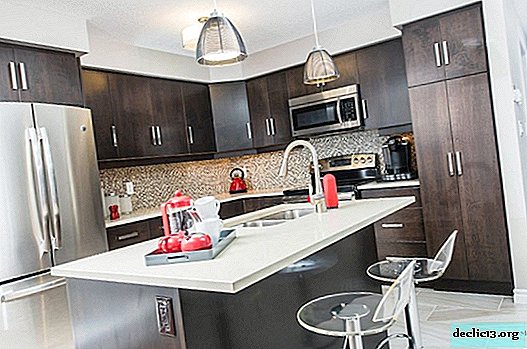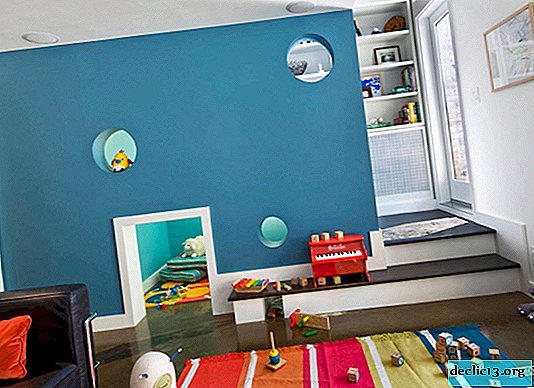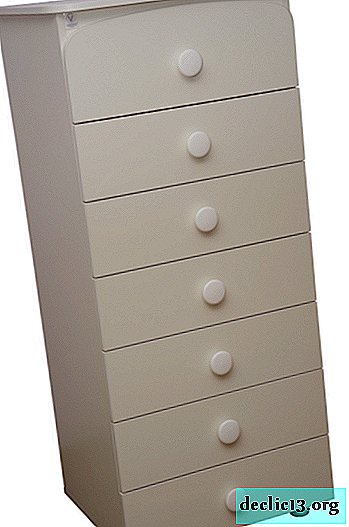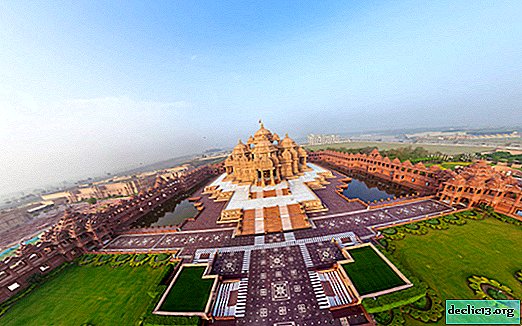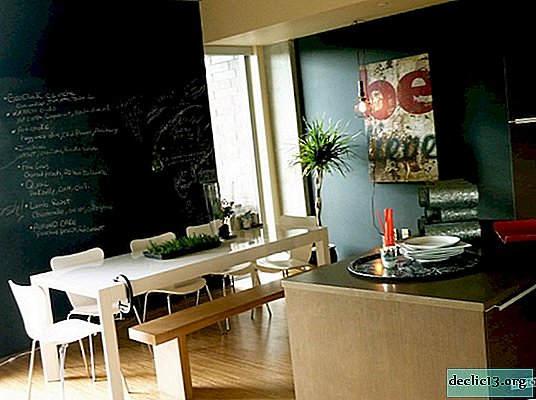Braunschweig in Germany - a tourist city of Lower Saxony
Braunschweig, Germany - a large German city with a rich historical past and attracting tourists with many attractions, beautiful architecture, beautiful parks and numerous festivals.
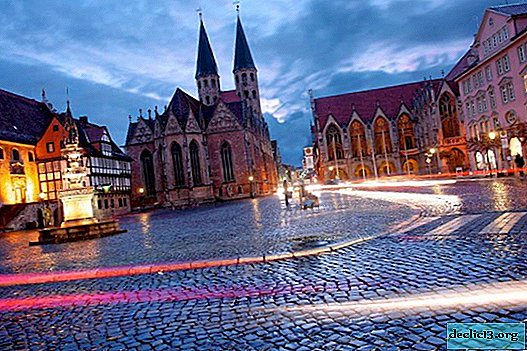
General information
Braunschweig, located in Lower Saxony, is not only one of the largest cities in its region, but also an important trade and tourist center of the entire federal state. The exact date of its founding is not known for certain, but scholars are inclined to believe that this happened no later than the 9th century, when the Saxon Earl Bruno II decided to establish his residence here. Actually, it was his name that formed the basis of the first name of Brunswick - Brunswick. As for the particle "wik", it translates as a transit point or a place to relax. However, this is far from the only version. There is an opinion that the city was founded by the merger of two villages - Brun and Vic, in whose honor it was named.
The heyday of Braunschweig fell during the reign of Heinrich Leo, who turned him not only into the capital of his state, but also into an important trade and political point. In gratitude for this, the locals made the king of animals the main symbol of their city. Nowadays, the image of this animal can be seen both on the coat of arms of Braunschweig and on the facades of city buildings.

Currently, Braunschweig, whose population is more than 250 thousand people, is one of the main tourist sites in the country. Moreover, it has several technical universities and up to 20 research institutes, thanks to which Braunschweig received the status of a city of science.
Sights
The sights of Braunschweig in Germany were badly damaged during World War II - then up to 90% of city buildings were destroyed as a result of aerial bombardment. In this regard, over the next decades, the city was actively rebuilt and changed its appearance. Work on the restoration of ancient architectural monuments continues in our time. Moreover, all the surviving and restored objects are enclosed within 5 “Traditional Islands", which are under state protection. The most important of them covers the area around the Braunschweig Cathedral, with which our acquaintance with this ancient city will begin.
Castle Square
Burgplatz or Castle Square is not only the main square of Braunschweig, but also the location of a whole group of important historical buildings - the Dankwarderode castle, the Guild building, St. Blasius Cathedral and half-timbered houses, which miraculously survived during the bombing.
Another important attraction of Burgplatz Braunschweig is the Huneborstel House, built in the middle of the 16th century. On the facade of this building, traditional for medieval Germany, you can still see ancient carvings made by a famous German sculptor. Among the other iconic structures of Castle Square is a copy of the famous bronze lion, a nine-hundred-kilogram original of which is stored in the museum of the Dankwarderode castle.
Braunschweig Cathedral
The Braunschweiger Dom or St. Vlas Cathedral, founded by the Duke Heinrich Leo after a pilgrimage to the holy places, stands on the site of an old wooden church. Being one of the most important religious attractions of Braunschweig, it attracts not only true Christians, but also ordinary tourists who want to enjoy the beauty of this magnificent building. Pointed towers, tall windows, strict facade lines - elements of the Gothic style are visible both in the external and internal design of the cathedral.
The oldest artifacts of this structure include medieval frescoes decorating the walls, and a stained glass window depicting the crucified Christ, located above the main altar. But perhaps the most interesting feature of the Braunschweiger Dom is the ducal tomb, in which, in addition to Heinrich Leo and his wife Matilda of England, sister of Richard the Lionheart, Caroline Braunschweig, wife of the English king George IV, is also buried.
Address: Am Burgplatz, 38100 Braunschweig, Germany.
Opening hours:
- Mon-Fri from 10:00 to 17:00.
- From early January to mid-March, the doors of the cathedral are closed from 13:00 to 15:00.
- From Monday to Friday, the cathedral hosts public excursions. The beginning is at 11:00 and 15:00.

City Hall, the construction of which began in 13 century. and lasted as long as 200 years, located on the old market square. This is not only the most important historical attraction of Braunschweig, but also one of the oldest city halls in Germany.
The building, decorated in a simple Gothic style, consists of 2 pavilions converging at right angles. The facade of the Town Hall is decorated with figures of dukes, emperors and other important figures who appeared here with the light hand of Hans Hesse. On one of the columns located inside the Rathaus Braunschweig, you can see the Braunschweig elbow, an old measure of length adopted by cloth dealers. Currently, the Old Town Hall is occupied by a branch of the City Museum, whose permanent exhibitions are dedicated to the history of Braunschweig.
- Museum Hours: Tue - sun. from 10:00 to 17:00.
- Free admission.
- Every Saturday at 15:00, the museum provides a free tour.

Happy Rizzi House, built in 2001 by the designer James Rizzi, can be called one of the most unusual buildings in Braunschweig. Nine small buildings erected on the site of the former princely residence and assembled into one office town invariably attract many tourists.
Despite the fact that there is no name plate on the house, it is not difficult to recognize it. Bright facades decorated with stars, hearts and funny faces, asymmetrical windows protected from the sun by external curtains, and funny figures that lead round dances on the roof make the Happy House the most recognizable landmark of the city. Moreover, in 2012, according to a survey conducted by Hertz magazine, he entered the hundred most beautiful buildings in Germany.
Address: Ackerhof 1, Braunschweig, Lower Saxony, Germany.

Dankwarderode Castle, built from 1160 to 1175, began its existence with the usual fortification fortress. Perhaps he would have remained a bastion of no interest to anyone, had it not been for the rapid development of Braunschweig, which fell just over the years of its existence. Already in the 15th art. the fortress lost its defense significance, and after another 200 years it turned into a luxurious Renaissance castle, created on the initiative of the very same Henry Leo. He was so inspired by the view of the imperial palaces of that time that he wanted to create something similar on the lands of Saxony.
True, in 1887 a fire broke out in the castle, which destroyed most of its premises. Restoration work was carried out for several years, but the Dankwarderode Castle still fell into disrepair. Then there was the war, after which barracks for wage workers were equipped in the premises of the dilapidated palace. Then the castle was completely dismantled, breaking a huge park in its place.

The second birth of Dankwarderode took place in 2007. Then, in the middle of the green zone, a modern shopping center appeared, the builders of which managed to restore exactly the original facade of the medieval ducal residence. Moreover, as a result of this reconstruction, the roof of the newly made palace was decorated with a quadriga with the figure of Brunonia, who received the title of the largest architectural chariot in Europe. Now the first floor of the center is occupied by the Ulrich Museum, and the central entrance to the building is guarded by bronze sculptures of two famous German military leaders.
- Where to find: Burgplatz, Braunschweig, Germany.
- Opening hours: Tue - sun. from 10:00 to 17:00.
Schedule and prices on the page are for July 2019.
Where to stay?
The city of Braunschweig in Germany offers a wide enough choice of housing for a small city. There are both inexpensive bed and breakfast hotels and comfortable hotels with parking lots, spas and wellness centers.

As for prices, the cost of living in a 3 * hotel double room is from 60 € to 120 €, while apartment rental starts from 50 € and above.
Transport accessibility
Despite the fact that Braunschweig has its own airport terminal, regular passenger flights are not organized here. If you are determined to get acquainted with the sights of this city, use the Hanover International Airport, which is only 65 km away.
Other megacities located in close proximity to this place include:
- Wolfsburg (30 km),
- Magdeburg (90 km),
- Göttingen (110 km).

The most convenient way to get to Braunschweig is by train - the city has direct connections between Berlin and Frankfurt, and the Deutsche Bundesbahn company serving this area operates both regular and high-speed flights. In addition, you can get to Braunschweig by bus and rented car - for this there are 2 large autobahns.
As for internal movements, they can be carried out both on buses and on trams - the Braunschweig system is represented by 5 tram lines and several bus lines. True, locals prefer to use bicycles, because the bike paths in the city are very well equipped. If you wish, you can transfer to this type of transport at any time, especially since the historical part of Braunschweig is closed for cars.
Compare accommodation prices using this form
Useful Tips
Going to Braunschweig (Germany), take note of a few useful recommendations:
- Tired of exploring city sights, take a look at one of the local shops - in addition to many other products, you can find delicious smoked sausage made from a selected liver. At one time, she became famous throughout the Soviet Union.
- The most vivid and unforgettable emotions can be obtained at Schoduvel, the country's largest carnival, which is held every year, starting from the 13th century. They say that it collects more than 25 thousand spectators.
- If you are traveling with children, be sure to check out the Arche Noah Zoo, located on Leipziger. Here live up to 300 animals belonging to 50 different species. The animals are kept in spacious enclosures, the conditions of which are close to natural, and eat good food.
- The best night clubs are in the Kalenwall area. They work only 2 days a week - on Fridays and Saturdays.
- Fans of chamber, jazz and symphonic music will surely enjoy the Braunschweig Classix Festival, which begins in May and ends in mid-June.
- Of no less interest are the “Vacations in Braunschweig”, a summer program with more than 150 events intended not only for adults but also for children.
- The most anticipated winter event is called the traditional Christmas market, considered one of the most beautiful markets in Germany.
- If you are an ardent fan of sports, visit one of the tournaments that are held here with enviable regularity.


Walk through the cathedrals and museums of Braunschweig, interesting facts about the city:







